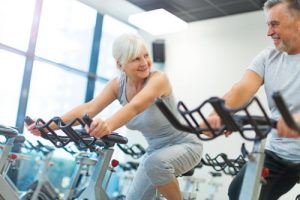
Here is a list of those exercises and activities that should be avoided if you have osteoporosis.
6 Exercises to Avoid If You Have Osteoporosis
Golf: Golfing may seem like a relaxing pastime, but the twisting motion used to hit the ball can put unnecessary stress on spinal discs, which can increase the risk of injury and fractures.
Sit-ups: Sit-ups cause the spine to curl, which can lead to tiny fractures of the small joints.
Jumping: Jumping exercises irritate the spine because it causes the spine to bend and puts additional pressure on it. Even exercises like running or too much cardio can be detrimental.
Russian twists: This workout helps targets all areas of the abdomen, but it combines the problems seen in golfing and sit-ups. Even the standing version of this poses the same risks to the spine.
Lumbar rolls: This is commonly seen in yoga —you bring your knees to your chest, hold them, and roll gently back and forth. This move puts additional pressure and strain on the spine, which increases the risk of fractures.
Skiing: Skiing is problematic because the sport itself comes with a much higher risk of falling. Without osteoporosis, a fall while skiing isn’t much of a big deal. But with osteoporosis, where the risk of bone fractures is already much higher, this is a sport best to avoid.
You may think there aren’t many options for you to exercise if you have osteoporosis, but this isn’t true. You can lift weights, swim, bike, perform low-impact cardio, use machines, use elastic bands, and fast-walk. These exercises won’t increase your risk of fractures but will help build up your bones.
Always speak to your doctor before beginning an exercise routine to ensure it’s safe.
Also read: How beneficial is yoga for osteoporosis? The do’s and don’ts